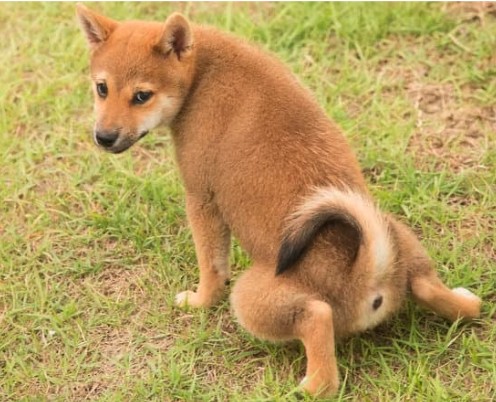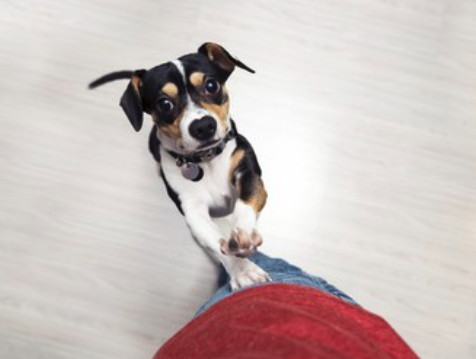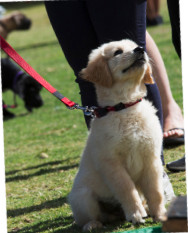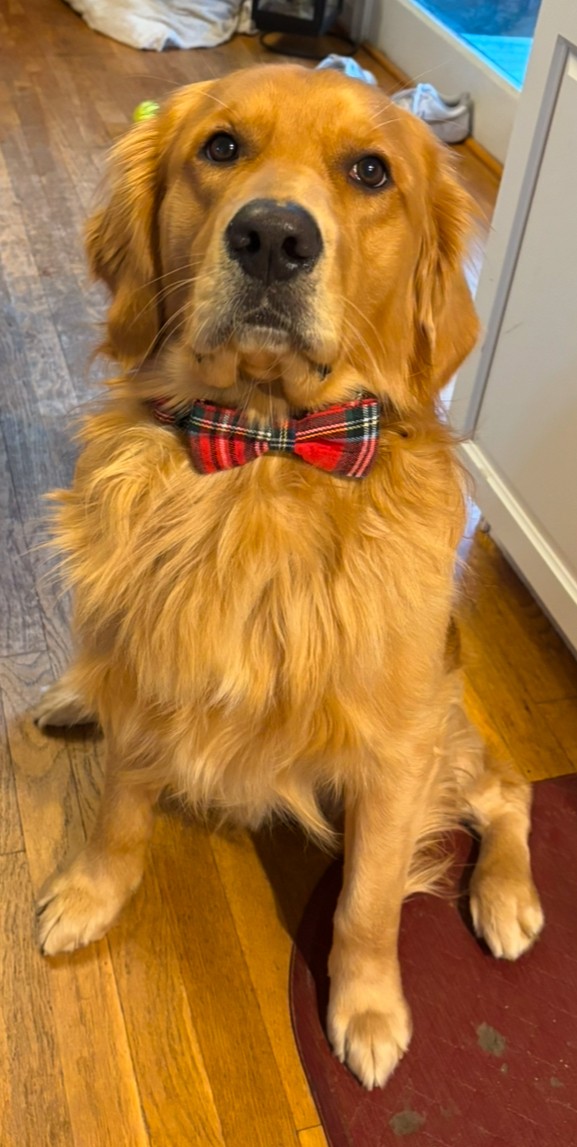
Going for a walk with your dog should be fun. But if your pup pulls and drags you down the street, it can feel like a big struggle. Don’t worry—you are not alone! Many dogs pull on the leash, and with a little training, they can learn to walk calmly by your side.
Meet Max the Tugboat
One of my clients had a young Labrador we will call Max. Max is sweet, full of energy, and very strong. Max's mom told me that every time she clipped on the leash, she felt like she was being pulled by a tugboat. Walks that were supposed to be happy and relaxing made her feel tired and stressed.
When I met Max, I explained to her that he wasn’t being “bad.” He was just excited to sniff and explore, and no one had shown him how to walk politely on a leash. We worked on some simple steps together. After just a few weeks, Max was walking nicely, and his mom finally enjoyed her time with him. Now she smiles when she tells me their daily walks are her favorite part of the day.
Why Do Dogs Pull?
Dogs pull because the world is exciting! They want to get to that smell, sound, or spot as fast as they can. If pulling gets them there, they’ll keep doing it. That’s why it’s so important to teach them that a loose leash—not pulling—makes the walk move forward.
Easy Tips to Help Your Dog Walk Calmly
- Use the Right Gear
A front-clip harness helps guide your dog back toward you when they pull. A simple 4–6 foot leash works best. Skip the long, retractable leashes while you’re teaching. - Stop When They Pull
The second the leash gets tight, stop walking. Wait until your dog relaxes or looks back at you. Then praise them and start again. They will learn that pulling makes the walk stop, but staying close makes it go. - Reward Good Choices
Bring yummy treats in your pocket. Every time your dog walks beside you or looks up at you, give them one. It shows them you love their good behavior. - Turn Around
If your pup keeps pulling, calmly turn and walk the other way. They will learn that rushing ahead doesn’t get them where they want to go. - Keep It Short
Start with five or ten minutes of practice in a quiet place. Little by little, add more time and new places as your dog improves.
Walking Together is Better
With patience and practice, your dog can learn to walk politely just like Max. You don’t need to feel pulled or frustrated anymore. Walking side by side makes every walk calmer, safer, and more fun. And best of all, it helps you and your dog feel even closer as best friends.
💛 Want even more help with your pup’s training?
Check out my Puppy Training Cheat Sheets & Progress Trackers. They’ll teach your puppy the 5 essential commands every family needs—sit, stay, come, down, and heel—with easy step-by-step guidance. Plus, they keep the whole family on the same page. All for just $9.97!
Check out my Puppy Training Cheat Sheets & Progress Trackers. They’ll teach your puppy the 5 essential commands every family needs—sit, stay, come, down, and heel—with easy step-by-step guidance. Plus, they keep the whole family on the same page. All for just $9.97!

Potty training a puppy is one of the biggest challenges new dog parents face. It takes time, patience, and consistency. But did you know most people make the same mistake over and over again? This mistake makes potty training take much longer — and causes stress for both you and your pup.
So what is the #1 mistake in potty training a puppy?
👉 Not giving your puppy enough chances to go outside.
Puppies have tiny bladders and very little control. They can’t “hold it” like older dogs. If you wait too long between potty breaks, your puppy will have accidents in the house. Over time, this teaches your pup the wrong lesson — that it’s okay to pee or poop inside.
When I brought home my golden retriever, Waffles, I learned this the hard way. On his second day, I thought I could run to switch the laundry before taking him out. By the time I came back, there he was — sitting proudly in a little puddle in the living room. That mess reminded me that puppies simply can’t wait, no matter how quick you think you’ll be!
How Often Should Puppies Go Out?
Here’s a simple rule: your puppy can usually hold it for one hour per month of age (up to about 6 hours).
- A 2-month-old puppy → every 2 hours
- A 3-month-old puppy → every 3 hours
- A 4-month-old puppy → every 4 hours
This means you’ll need to take your puppy out a lot during the day — and even at night for very young pups
Want to know how to avoid the #1 mistake in potty training a puppy? Try these simple steps:
- Stick to a schedule: Take your puppy out first thing in the morning, after meals, after naps, after playtime, and before bed.
- Use a crate or playpen: Puppies don’t like to go potty where they sleep. This helps teach them to hold it until they’re outside.
- Praise and reward: Every time your puppy goes potty in the right spot, use a happy voice and give a small treat. This teaches them where they should go.
The #1 mistake in potty training a puppy is waiting too long between potty breaks. By taking your pup out often and rewarding success, you’ll avoid accidents and build good habits fast.
⭐ Pro Tip: Consistency is everything. The more chances your puppy has to go outside, the quicker they’ll learn to potty in the right place.
✨ Want more help with potty training?
Join my free Facebook group where I host the “3 Steps to a Potty Trained Puppy” workshop.
In this free training, I’ll walk you through my 3 simple, proven steps to help your puppy understand where (and when!) to go potty—without stress, confusion, or endless mess.
You’ll learn:
✅ The “Hold Time” Rule – so you can set a realistic potty schedule
✅ The Power of Routine – how consistency builds faster success
✅ Crate Training Done Right – using it as a safe, supportive tool (not punishment)
Whether you just brought your puppy home or have been struggling for weeks, you’ll walk away with a clear plan you can start using the same day—and see results fast.

Is your puppy bursting with excitement, causing them to jump on you—or, even worse, onto guests? While jumping may seem cute at first, it’s a behavior that can quickly become an issue, especially as your puppy grows. Whether you're training a young pup or breaking the habit in an older dog, this behavior can be redirected into calm greetings with the right approach.
Dogs often jump to greet or get attention, but this habit can be dangerous for small children, cause injuries, or simply become annoying. The good news is that, with consistency and patience, you can teach your puppy (or adult dog) to stop jumping on people, making their greetings more enjoyable for everyone. Here are five simple steps to help you get started:
1. Understand Why Puppies (and Dogs) Jump
Puppies often jump to greet people and get closer to faces for affection. It’s their way of saying “hello” and seeking attention. While it's an instinctive behavior, you can teach them more appropriate ways to interact. Understanding that your puppy jumps to get attention is the first step in helping them learn how to greet you—and others—calmly.
2. Stop Reinforcing the Behavior
Puppies jump because it works: they get your attention. Even if you push them down or say “No,” that’s still attention. The key is to remove any attention when your puppy jumps. Immediately turn your back, cross your arms, and avoid eye contact. When ALL FOUR PAWS are on the floor, give them calm praise and attention. It’s crucial to remain consistent—no exceptions!
3. Teach an Alternative Behavior
Instead of jumping, teach your puppy to sit when they greet you. This gives them an action to focus on that’s incompatible with jumping. Whenever your puppy approaches, ask them to sit, and only offer attention or treats (these are my favorite treats to use because they re healthy nd the dogs love them) when they remain sitting. Start this training as early as possible, but remember, older dogs can learn too! The more consistent you are with asking for “sit,” the quicker they will understand that sitting brings rewards, not jumping.
4. Use Rewards and Praise
Positive reinforcement is key to teaching your puppy. As soon as they stay calm or sit when greeting you, reward them immediately with praise, a treat, or affection. Gradually phase out treats as your puppy becomes more consistent, but keep using verbal praise like “Good puppy!” to reinforce the behavior.
5. Practice With Guests
It’s one thing to stop your puppy from jumping on you, but you’ll need to train them not to jump on others as well. When guests arrive, inform them about the training. You could even have a jar of treats outside your door for the guests to have in hand when they enter. Ask them to ignore your puppy if they jump and only offer attention when the puppy is sitting or calm. You can also use a leash to maintain control during greetings, especially with young puppies. Ask your puppy to sit while you greet the guests, then reward them for staying calm.
To make this process even easier and to make greetings easy for everyone, I create this free PUP IN TRAINING sign.
By displaying this sign at your front door, you’ll give visitors clear instructions on how to interact with your puppy—making training smoother and more consistent.
Here’s what the sign includes:
- A gentle reminder for visitors to ask for a sit before giving treats.
- Instructions to turn away if your puppy jumps.
- A space to write your puppy’s name for a personal touch.
Simply print, hang it up, and let your guests be part of your puppy’s success!
Grab it HERE
Breaking the habit of jumping is easier when your puppy is young, but it’s never too late to train an adult dog! With consistent training, positive reinforcement, and involving everyone in your household, your dog will learn to greet people with all four paws on the ground.
Consistency is key—soon, jumping will be a thing of the past, and your dog will greet both you and guests with calm, friendly energy.
I invite you to join my free group...
My free Facebook group for busy dog moms who want to confidently nourish their pups without second-guessing every bite. Inside, you’ll find simple nutrition tips, label-reading help, feeding strategies, and real support to raise a dog you truly love living with—starting at mealtime and lasting a lifetime.
💛Because every pup deserves a full bowl and a full heart.

Training your puppy is one of the best ways to help them grow into a happy, well-behaved dog. When your puppy knows the right commands, they can stay safe, listen better, and you will build a stronger bond with them. That's why I always say, a trained dog is a happy dog. Here are the 5 essential commands that every puppy should learn and why they are so important.
1. Sit
Teaching your puppy to sit is one of the first things you should do. This command helps them stay calm and focused. When your puppy is sitting, they aren’t jumping on people or running around. This makes it easier to handle them in different situations, like when guests come over or before feeding time. It’s also a great way to help them stay patient and well-behaved.
Why it matters: Teaching "sit" helps your puppy learn to listen and follow instructions. It’s the foundation for more advanced training and helps build trust between you and your puppy.
2. Stay
The “stay” command is super important for keeping your puppy safe. It teaches them to stay in one place even when they want to run or explore. This is especially helpful when you’re opening doors, crossing the street, or if there are other dogs around. "Stay" helps your puppy control their impulses and learn patience.
Why it matters: Keeping your puppy safe is the biggest reason to teach “stay.” It can prevent accidents, like running into traffic, and helps them be calm in busy situations.
3. Come
The “come” command is all about safety. When your puppy knows how to come when called, you can keep them from getting lost or running into danger. Whether they’re playing outside or off-leash at the park, “come” brings them back to you safely. This command also builds trust between you and your puppy because they learn that coming to you is a good thing.
Why it matters: “Come” keeps your puppy out of harm’s way and is one of the best ways to make sure they stay close when it matters most.
4. Down
The “down” command helps your puppy relax. Sometimes puppies get too excited, and "down" can calm them down. This command is great for when you’re out in public, like at the vet’s office, or when you have guests over. A puppy that knows how to lie down on command is easier to manage and less likely to cause trouble.
Why it matters: It helps your puppy learn self-control, which makes them easier to handle in different environments. This command is also a sign of respect from your puppy, showing they are willing to listen.
5. Leave It
“Leave it” is a life-saving command. It teaches your puppy to ignore things they shouldn’t touch, like dangerous objects, food, or even harmful substances. Puppies are curious, and this command helps keep them out of trouble by teaching them to focus on you instead of whatever is on the ground.
Why it matters: “Leave it” can stop your puppy from picking up something harmful, like chocolate or sharp objects. It’s a powerful way to keep your puppy safe and show them that listening to you is important.
Training your puppy with these 5 essential commands will keep them safe and help you build a strong, happy bond. A trained dog is a happy dog, and these commands are the key to making sure your puppy grows into a well-behaved, confident companion. Start training today and watch your puppy become the best friend you’ve always wanted!
To make training even easier, I’ve created a Puppy Training Cheat Sheets & Trackers Bundle! This bundle gives you step-by-step instructions for teaching each of these essential commands, plus trackers to help you monitor your puppy’s progress and keep the whole family on the same page.
These tools are designed to help you stay consistent and make training a fun experience for both you and your puppy!
If you desire to raise happy healthy dogs I invite you to join my free community where you will find my
FREE Preparing for a Puppy 5 Day Challenge!
My free Facebook group for busy dog moms who want to confidently nourish their pups without second-guessing every bite. Inside, you’ll find simple nutrition tips, label-reading help, feeding strategies, and real support to raise a dog you truly love living with—starting at mealtime and lasting a lifetime.
💛Because every pup deserves a full bowl and a full heart.



